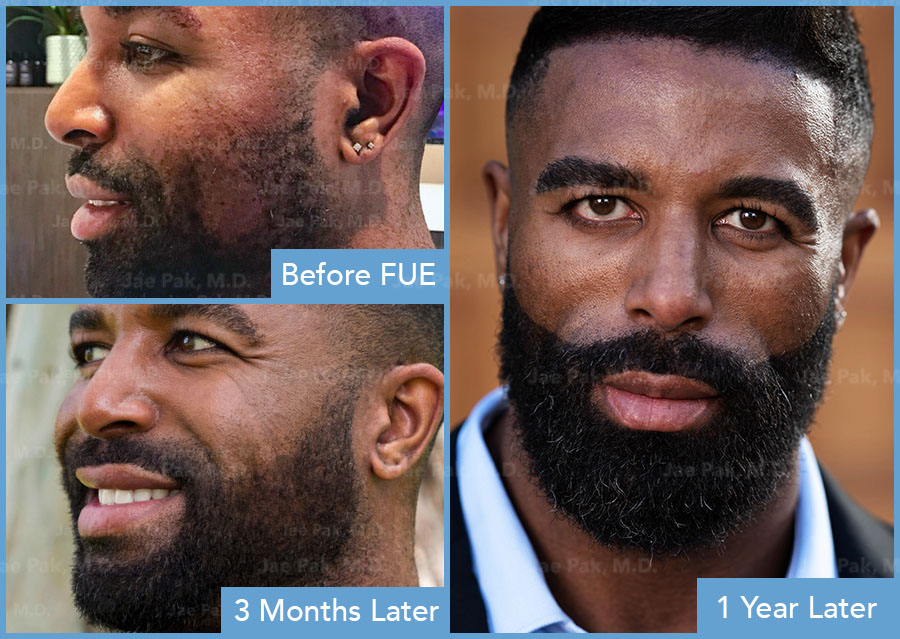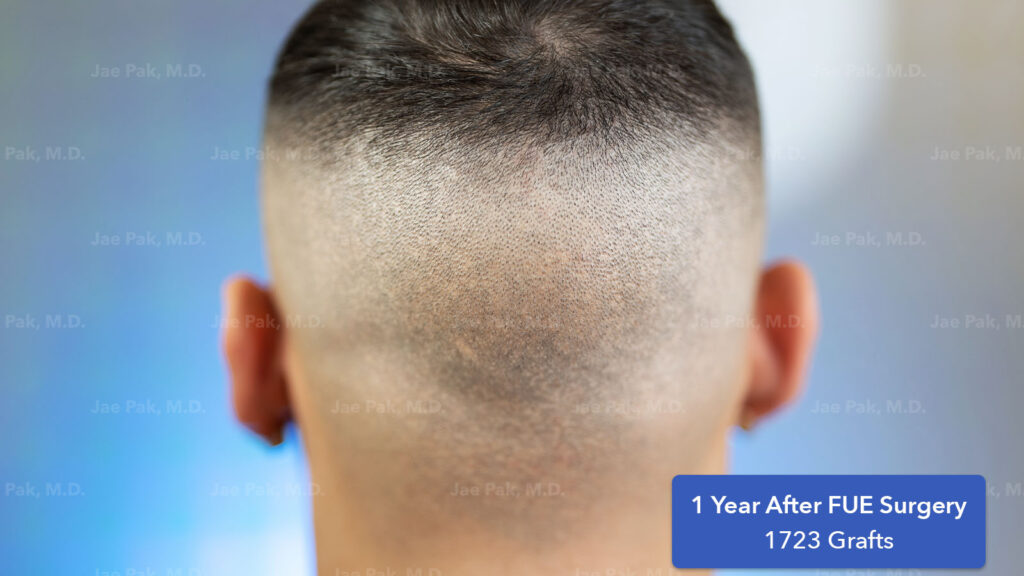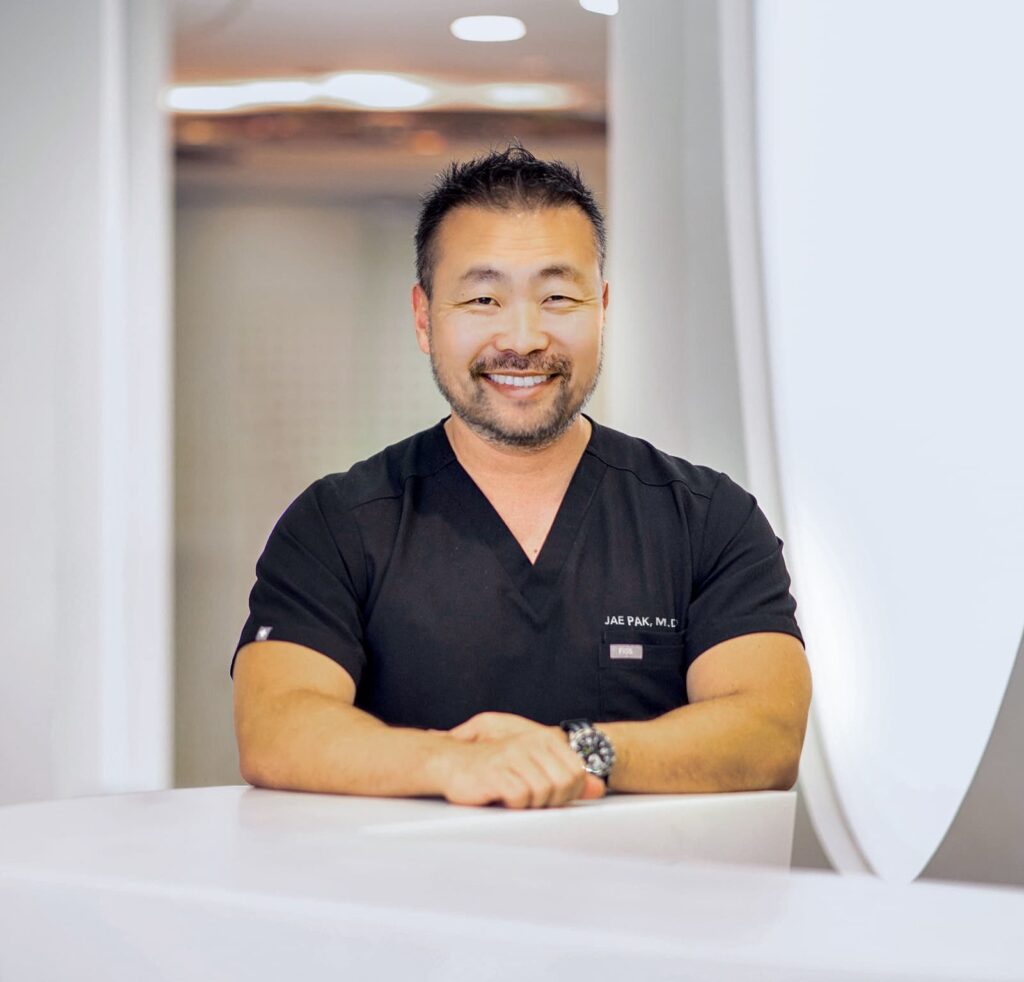Does a Beard Transplant Surgery Leave a Scar?

Thankfully, there are many options to stimulate facial hair for anyone struggling to grow a full beard and get results. Entire communities online are devoted to unlocking secrets of beard grooming, supplements, and strategies to maximize the potential of your facial hair. It’s not just speculation, either — countless success stories have been shared.
But at a certain point, our genetic potential reaches its upper limit, and patients see diminishing returns from their beard growth efforts the longer they go. This is when many individuals opt for surgical procedures like beard transplants to take their look to the next level.
Beard transplants are effective, relatively low risk, and can offer permanent, transformative results for patients of all backgrounds. In fact, this is one of the top-rated cosmetic surgeries to hit the mainstream in recent years.
Facial hair transplantation works – there’s no doubting that. But the questions that many prospective patients ask regards scarring, specifically, whether beard transplants leave scars behind long after the procedure is complete.
Of course, there is no quick answer for a technical cosmetic procedure like a beard transplant, so in this article, we’re laying down all the facts you need to know. We’ll discuss why these scars form, what methods can be used to minimize them, and why choosing the right surgeon and clinic is so vital for your beard transplant success.
Let’s get into it.
Beard Transplant Scar Basics
No matter what type of surgery you choose, some scarring will result from your body’s natural response to the incisions made. Beard transplants are no different, but there are many variables at play. Here are the basics to get you started.
Types and Causes
The main area where scarring occurs is on the back of the head towards the neck, in the donor area. This is where physicians target healthy, strong hair for harvesting. Different methods can be employed to select the best available hair safely and quickly.
While precise, sharp instruments are used to harvest hair, all methods require entry into the skin to fully remove follicle units, which can contain up to five hairs in a cluster. The result is a scar of some form or another, which forms during the recovery phase long after the procedure is complete.
The second phase of beard transplant surgery includes the actual grafting of hair to the target areas of the face, typically on the cheeks, the goatee area, or the mustache.
Tiny incisions are required to create space for this newly transplanted facial hair, but the scars that form are so small they are barely noticeable in most cases. Patients are also likely to grow out their beards following surgery to fully embrace their new look, meaning that any scars will be covered by a more densely covered beard the majority of the time.
Size and Shape
The most common scar left behind by hair harvesting is a typical, fine-line scar that fades and flattens over a year. While the scar will never disappear completely, there are ways to hide and minimize this scar with techniques we’ll discuss later on.
It is far less likely for scars to be hypertrophic or raised from this process unless the procedure is performed with poor technique or the patient does not follow through with the correct aftercare process.
As we explore the different types of beard transplant methods used by surgeons, we’ll examine the different shapes and sizes of scars and how to minimize them over time.
Timing and Healing
The saying goes that time heals all wounds, and it’s mostly true when looking at beard transplant scars. Patience is the best virtue you can practice when recovering from any surgery, and in most cases, your beard transplant will yield full results within about 12 months of the initial procedure.
While swelling and bleeding will subside shortly after surgery is finished, the incision areas may still be sensitive for weeks and months to come. Furthermore, the newly grafted hair will take months before roots are fully formed, and patients can start manipulating their beard styles in the ways they want.
Because scars will continue to heal in the months to come, we at Jae Pak MD Medical usually give patients that one-year benchmark to keep expectations within reason.
FUE vs. FUT Beard Transplants
The type, size, and severity of a scar from beard transplantation will mostly be determined by the skill of the surgeon but also the technique they use during the hair harvest process.
The ongoing debate between Follicular Unit Excision (FUE) and Follicular Unit Transplant (FUT) is still in play for beard transplants since physicians use both methods as a way to gather healthy hair and build a new facial hair look.
Which One Causes Scarring?
There’s no avoiding the fact that both FUE and FUT extraction methods cause some degree of scarring on the donor area, but we must consider the difference between these two types of scars.
Since FUE is done through a “hole-punch” incision technique that targets valuable clusters of follicles, any resulting scars will be minimal and scattered around the donor area. If a patient chooses to wear their hair short, you may see a familiar “patchwork” scar arrangement from FUE work.
FUT, also known as “strip surgery,” causes more significant scarring because a horizontal strip of skin must be removed from the donor area. While this wound is sealed quickly and heals fully, this scar will remain long-term and usually more noticeable from a further distance away.
We’re here to help
Schedule a consultation with Dr. Jae Pak to see if a beard transplant is right for you.
Why Is FUE Preferred for Beard Transplant?

While a surgeon can obtain donor hair for facial hair transplantation through FUE and FUT methods, we recommend that clients opt for the FUE method.
Reduced scarring is a benefit, and in most cases, the high volume of hair yielded from FUT strips is not required to achieve the patient’s facial hair coverage goals.
FUT is not outdated for scalp hair transplant and is sometimes preferred due to the ability to perform “mega sessions” with thousands of grafts at a time.
For beard transplants, however, most surgeries don’t go above the 1,000 graft mark, making FUE a more efficient solution that won’t result in any wasted hair. It’s also viable for multiple FUE procedures to be performed over many years, giving patients more options for supplementary surgeries down the line.
Of course, it’s always up to the patient to establish any procedure’s goals and scope. With something like a beard transplant, which can (and should) be highly customized and personalized, patients must work closely with surgeons during the consultation period to ensure they achieve the ideal result with the correct method.
How Can I Minimize Scarring From a Beard Transplant?
Patients considering beard transplantation should not be discouraged because scarring is part of the process. Between precise modern instruments used in surgery rooms and medicines to help reduce scarring after the fact, these small scars are hardly a factor.
With that said, patients looking to transform their beards through surgery must follow a proven framework to optimize their results and keep scarring to an absolute minimum at every stage of the process. Here are the three main points you should follow.
1. Choose the Right Procedure
Selecting between FUE and FUT is just the beginning when mapping out your procedure and getting the results you want. Smart planning is key to a satisfactory experience with surgery overall and ensuring you’re happy with the long-term outcomes.
The more specific you can be with your surgeon, the better, so do everything you can to articulate your vision during the consultation. Don’t hesitate to explore a range of options before committing to a certain plan. This will help your results look natural and timeless while keeping unwanted side effects at bay.
2. Pick an Experienced Surgeon

Even with a clear idea of what you want for your new beard, the surgeon can make or break the procedure, so choose wisely.
Beard transplantation is one of the fastest-growing cosmetic procedures right now, with clinics appearing rapidly around the world. This means that some new surgeons are entering the market and may not have the level of experience you can trust for such a serious procedure.
Track record is the key here, so take the time to read reviews, browse before & after galleries, and make sure your chosen doctor has experience with the type of style you desire. Variables like patient ethnicity and age matter here too.
You want your surgeon to have years of direct experience — ideally with all types of hair restoration methods, like Dr. Jae Pak, M.D. — so you know you’re in good hands.
3. Follow Instructions and Follow Up
While the surgeon and clinic will do most of the heavy lifting during surgery, it’s up to you, the patient, to follow instructions closely during the aftercare process to prevent excess scarring and have an effective recovery overall.
The best clinics will lay out an easy-to-follow protocol with detailed steps that leave nothing to chance so that you can rest assured knowing you’re on the right track for recovery. This may include using topical medicines, minimizing movement, and washing the affected areas to keep them clean and in the condition to heal.
Dr. Jae Pak, M.D. places patient care as a top priority so that you have the support you need during your recovery process.
You should also have continued support from your clinic during the recovery phase, and be sure to set follow-up meetings with the surgeon when certain benchmarks are met. Beyond that, you may want to look into using ointments or creams to target scars and further minimize their appearance.
The Best Beard Transplants Look Natural
With so many modern tools at our disposal, beard transplants look better than ever, and scarring is no longer a concern. Choosing your surgeon and procedure with care is important, but following these steps will ensure scars do not hold back your results.
To connect with leaders in the beard transplant field and get the results you want, reach out to our Jae Pak MD Medical team and get the ball rolling today.
Sources:
What is the recovery like after a hair transplant | Academia
Beard Transplants | Arkansas College of Barbering & Hair Design
Find out if Hair Restoration is right for you.
Speak with Jae Pak, M.D. today!